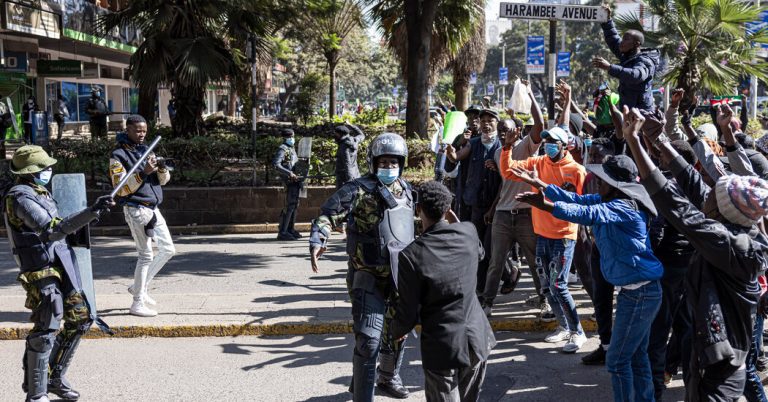The immediate trigger for the raging protest that hit the Kenyan capital on Tuesday was a series of tax hikes – extra shillings that ordinary citizens would owe their government. The underlying cause, however, is the billions of dollars their government owes its creditors.
Kenya has the fastest growing economy in Africa and a vibrant business hub. But her government is desperately trying to prevent bankruptcy. The country’s staggering domestic and external public debt of $80 billion represents nearly three-quarters of Kenya’s total economic output, according to a recent report by the United Nations Conference on Trade and Development. Interest payments alone eat up 27% of revenue collected.
The prospect of repayment is years away.
The debts that make Kenya miserable are all over Africa. More than half the people on the continent live in countries that spend more on interest payments than on health or education.
“The children of this generation who don’t get an education today will be scarred for life,” said Joseph Stiglitz, former chief economist at the World Bank. He noted that there was growing evidence that “countries in crisis do not—perhaps never—recover to where they should be.”
The global debt crisis is the relatively mild label used to describe the brutal loops of unsustainable lending and bailouts that have long ensnared developing countries. This latest cycle—considered the worst on record—was precipitated by events far beyond any country’s control.
The deadly coronavirus pandemic has shut down already fragile economies. The sudden need to provide vaccines, medical care, protective clothing to hospital workers and subsidies to people unable to afford food or cooking oil further drained government bank accounts.
A war between Russia and Ukraine along with sanctions imposed by the United States and its allies caused global food and energy prices to rise. The wealthier countries then interrupted the spiraling inflation by raising interest rates, causing debt payments to rise.
In addition to these woes, recent floods in Kenya have destroyed infrastructure and agricultural land and displaced thousands of people.
M. Ayhan Kose, deputy chief economist at the World Bank, said that “40% of developing countries are, in one way or another, vulnerable to a debt crisis.”
Finding a solution to the current debt trap in which poor and middle-income nations find themselves is more difficult than ever.
Thousands of creditors have replaced the few big banks in places like New York and London that managed most countries’ foreign debt. One of the most important new players is China, which has lent billions of dollars to governments in Africa and around the world.
Starting over a decade ago, China has moved into the ranks of major lenders to emerging countries, and the size of its portfolio now rivals that of the International Monetary Fund and the World Bank.
Of the $37.4 billion in external debt owed by Kenya at the end of 2022, at least $6.7 billion was owed to China, according to the IMF
To avoid default, countries like Kenya are forced to borrow even more money, only to see their total debt rise even more. And the greater the debt, the less willing lenders are to offer additional financing.
China has cut its lending over the past several years after concluding that it was taking too many risks by lending to low-income countries. It has collected from previous loans and issued fewer new loans.
He’s not the only player to back down. Japan and France as well as major commercial banks in Italy, Germany and Britain have also reduced their exposure.
It took Zambia four years to reach an agreement with its creditors after the first default. Ghana, after defaulting on billions of dollars in debt last year, reached an agreement just this week with private creditors to restructure $13 billion worth of loans. And Ethiopia is struggling to work out a restructuring deal.
In February, Kenya paid more than 10 percent on international bonds to have the cash to cover a $2 billion Eurobond payment due this month.
The World Bank, IMF and African Development Bank have all bailed out and increased their lending to Kenya to fill the gap when no one else would. But they, in turn, want the government to take steps, such as raising taxes, to find a stronger economic base.
An agreement this month between Kenya and the IMF to provide additional money warned of a “significant shortfall in tax collection” and a worsening fiscal outlook.
In May, William Ruto, the country’s president, said he was confident Kenyans would eventually come around to supporting his actions. “I’ve been very honest that I can’t continue to borrow money to pay salaries,” he said in an interview. “And I explained to the people of Kenya that we have the choice to either borrow money or collect our own taxes.
This month, Pope Francis convened a meeting at the Vatican and called for debt cancellation and an overhaul of the global financial architecture to avoid debt crises like the one rocking Kenya.
Unmanageable debt, he said, deprives “millions of people of the possibility of a decent future.”
Declan Walsh and Ruth Maclean contributed to the report.




